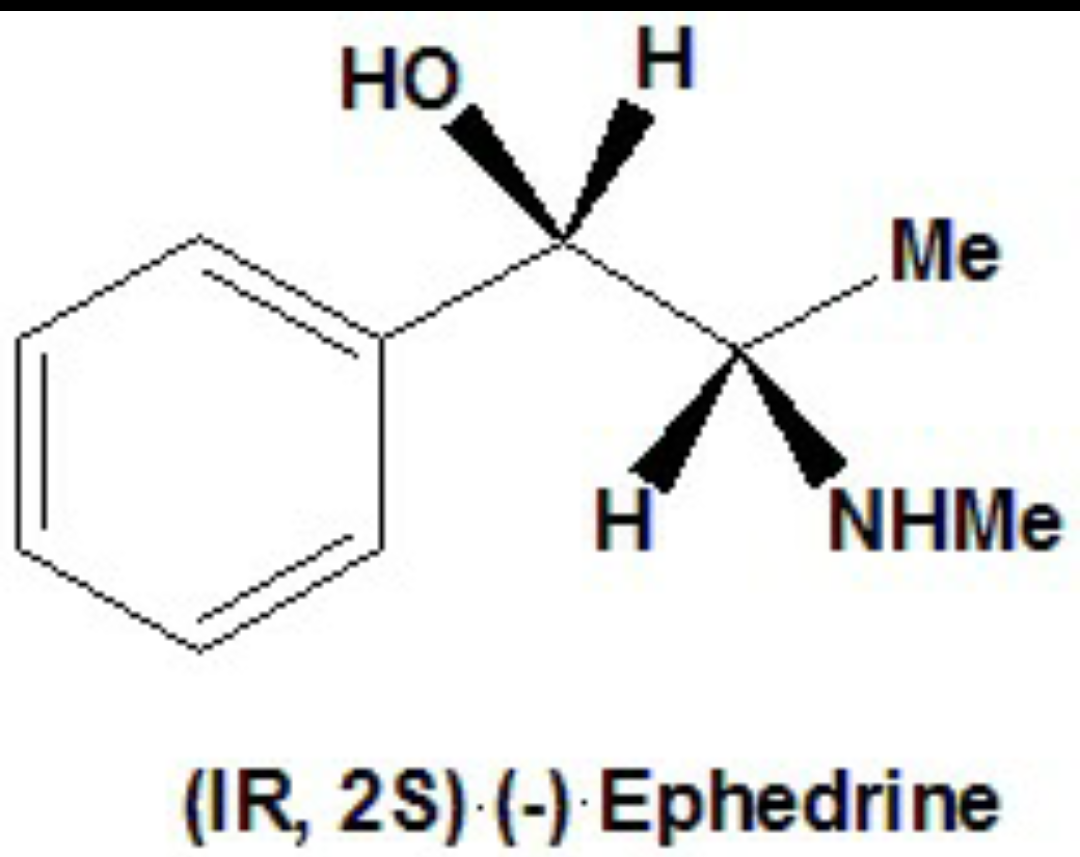Ephedra: Biological Source, Chemical Constituents, Morphological Feature, Therapeutic Uses and MCQ

EPHEDRA
1. Biological source :
• It is a shrub belongs to the Ephedraceae family.
• The order is Ephedrales.
• It is also known as joint pine , joint fir, Mormon tea or Brigham tea.
2. Morphological features :
• This shrub can grow up to 60 cm high.
• It is an evergreen shrub like plant and it has 50 species.
• The body of this plant is saprophytic and represent xerophytic character.
• Mostly they are woody shrubs ,few are lianas and some are small tree.
• This plant is differentiated into 3 parts : root, stem and leaves.
• They spread by the use of rhizomes.
• Their stems are green and photosynthetic.
• Leaves are opposite in arrangement and whorled.
• The shape of leaves are scale like and they are fuse into a sheath at the base which sheds soon after development.
• They have no resin canals.
• Plants are dioecious having the pollen strobili in whorls of 1-10,in which each have a series of decussate bracts.
• The pollens of this plant are furrowed.
• They also have female strobili in whorls with bracts which fuse around a single ovule.
• The colour of the seeds are yellow to dark brown which are generally 1-2 per strobilus.
• The branches of this plant are slender, more or less broken aerial stems which are woody in nature and branched only at the base.
• Stems contain numerous, fine and longitudinal ridges.
• Leaves are small and connate at the base.
• The stems of Ephedra sinica staf species. are about 30 cm long and ashy grayish – green in colour and slightly rough .
• The diameter of node is about 1-2 mm and diameter of internode is 3-6 cm.
3. Chemical constituents :
• Ephedra’s contain 0.5 – 2.0 % of alkaloids of the total ephedrine.
• They also have pseudoephedrine .
• Roots are consist of macro cyclic alkaloids and feruloylhistamine.
• It consist of N- methyl ephedrine , herbacetin and cathine as a chemical compound.
• Tannins are also found in mostly ephedra species.
• They have flavonoids and polysaccharides.
4. Therapeutic Uses :
• Ephedra have properties of anti- inflammatory, anticancer, antibacterial, antioxidant.
• They show activities of hepatoprotective, anti-obesity and antiviral.
• They also have diuretic activity.
• It is used to treat asthma and hay fever.
• It have more prolonged action than adrenalin and it have advantage that it can be administered by mouth.
• It has antisudorific action.
5. Adulteration :
Ephedra show adulteration with botanical dietary supplements for their uncontrollable stimulating side effect. They also get adultered with BDS to promote losing weight.
MULTIPLE CHOICE QUESTIONS :
1. Ephedra belongs to which family
(a) Apiaceae
(b) Bignoniaceae
(c) Liliaceae
(d) Ephedraceae
2. The height of ephedra shrub
(a) 40cm
(b) 50cm
(c) 60 cm
(d) 80 cm
3. The body of ephedra shrub is
(a) Saprophytic and represent xerophytic character
(b) Woody
(c) Differentiated into 3 parts : root, stem and leaves
(d) All of the above
4. Shape leaves of ephedra shrubs
(a) Scale like
(b) Opposite in arrangement
(c) Whorled
(d) All of the above
5. The stem of ephedra shrub
(a) Contain longitudinal ridges
(b) Woody
(c) Branched only at once
(d) All of the above
6. Chemical constituent of ephedra are
(a) Alkaloids
(b) Pseudoephedrine
(c) Feruloylhistamin
(d) All of the above
7. Ephedra contain………. percentage of alkaloid in total ephedrine
(a) 0.6-0.7 5%
(b) 0.2-5.0 %
(c) 0.5-2.0 %
(d) 3.0-6.0 %
8. Ephedra used as
(a) Anti-inflammatory
(b) Anti-cancer
(c) Anti-bacterial
(d) All of the above
9. Ephedra show activity of
(a) Hepatoprotactive
(b) Anti- obesity
(c) Anti-viral
(d) All of the above
10. Ephedra show adulteration with
(a) Black pepper
(b) Botanical dietary supplements
(c) Terpines
(d) All of the above
ANSWERS:
1. Ephedraceae
2. 60cm
3. All of the above
4. All of the above
5. All of the above
6. All of the above
7. 0.5-2.0 %
8. All of the above
9. All of the above
10. Botanical dietary supplements
REFERENCE:
Evans W.C. , Editors. Trease and Evans Pharmacognosy . New York, Saunders Elsevier; 2009 , 376.